This post may contain affiliate links. If you use these links to buy something we may earn a commission. Thanks.
Ground cover plants hardy to zone 6 offer several options that love shade. The best part of finding the right shade-loving ground covers in this zone is that you’re able to choose from all zones below you, too!
Continue your search here: Best Zone 5 Ground Covers for Shade (With Pics)
Zones 3-5 have a ton of amazing options for you, so don’t scroll feeling like this plant list is the end of your journey!

The top section offers a list of plants that thrive as ground covers in full-shade areas, and as you move down the post, you’ll find partial-shade options. What you won’t find here, are ground covers that require full sun.
For every zone 6 ground cover, you’ll learn about:
- what they look like,
- their origin,
- their hardiness range,
- the main functions they offer you and the landscape,
- ideal lighting requirements,
- soil preferences,
- and where you can source seeds, cuttings, or plants in containers.
From this information, you’ll easily glance at each plant, stop at the appropriate ones for your site, and compile a list of the ones you love the most.
The final step to narrowing your list is to check your local invasive species guide and consider alternative options where necessary.
Once you’ve narrowed the list to suit you and your landscape the best, decide if you’ll grow from seeds, cuttings, or transplants.
If you have trouble finding the ideal plants you want—seeds for plants are often available from small businesses on Etsy with free shipping. Otherwise, shop at your local nursery, or order plants in containers from Nature Hills Nursery.
Please share your plant list by commenting on this post and why you made your choices!
Full shade zone 6 ground covers:
Full shade ground covers grow and thrive without any direct sun. Full shade can mean brightly dappled light or deep heavy shade. These ground covers grow well in both lighting environments.
Redwood Sorrel (Oxalis oregana)
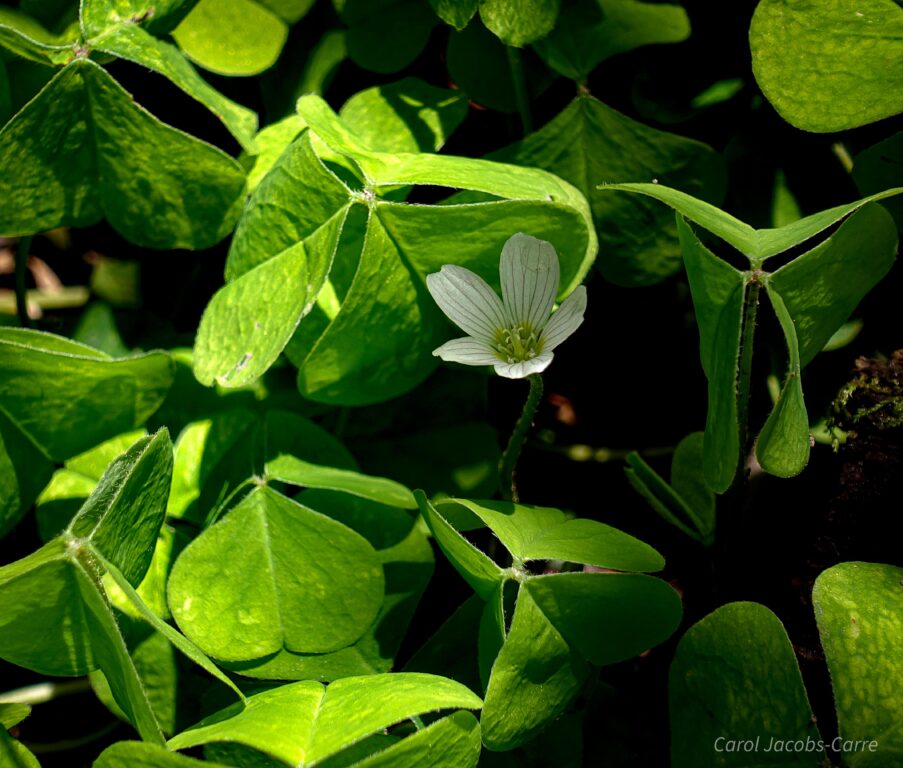
Redwood sorrel makes a great woodland, native, or food forest ground cover as it is good at competing for ground space. It often needs weeding in its first year, but after that will maintain its territory.
Some say this plant grows invasively. For an edible ground cover, however, an aggressive nature means more food for you or the garden!
- Height: 2-4 inches.
- Range: Native to Western North America
- Climate: Zones 6-9
- Functions: Edible ground cover is often added to food forests. Dense carpeting ground cover for any amount of light.
- Light requirements: Full, semi, or no shade.
- Soil preferences: Moist soil from light to heavy texture.
This variety can be bought as a plant or seed here.
Miner’s Lettuce (Claytonia perfoliata)

With edible leaves, flowers, and roots claytonia (miner’s lettuce) is a popular edible ground cover—it has an annual lifecycle and is also ground in zones 3-5 but has a very long life in zones 6-10. Succulent juicy leaves are excellent in salads, wraps, or sandwiches.
Claytonia can reseed itself, so an annual life cycle doesn’t have to be a deal-breaker if you’re looking for a set-it-and-forget-it ground cover.
- Height: 14 inches
- Range: Native to Western North America
- Climate: Zones 6-10
- Functions: A popular edible ground cover in food forests and vegetable gardens. Often grown in colder zones as an annual crop and companion with other annual vegetables. Dense carpeting ground cover for any amount of light, but best with dappled light.
- Light requirements: Full, semi, or no shade
- Soil preferences: Moist or dry soil with drainage.
Claytonia is often grown and sold as seeds and is available here with free shipping.
Related: 24 Best Edible Ground Covers for Shade
Cyclamen (Cyclamen hederifolium)
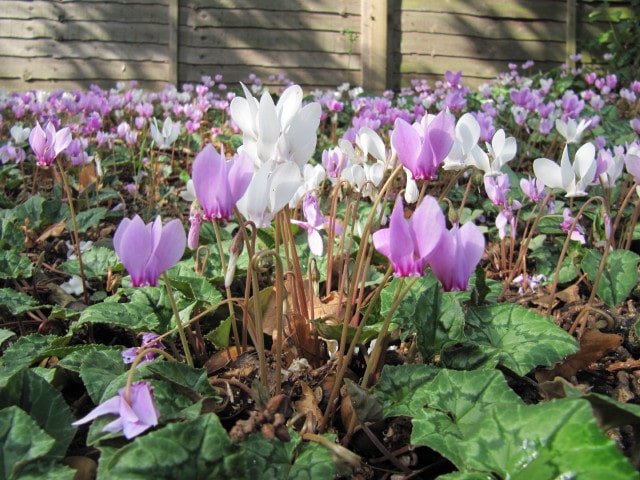
For shaded or lightly shaded rocky areas, cyclamen thrive in light, medium, or rocky soils.
- Height: 4-6 inches
- Range: Native to Europe
- Climate: Zones 6-9
- Functions: Attractive ornamental ground cover for deer/rabbit resistance.
- Light requirements: Full, semi, or no shade.
- Soil preferences: Moist soil.
Seeds are available here.
Related: 36 Best Ground Covers & Plants To Grow in Rocky Soil
Friar’s Cowl (Arisarum vulgare)

This low grower is often used, specifically, as a ground cover in shade and happens to have edible roots and leaves.
- Height: 4-12 inches.
- Range: Native to Europe
- Climate: Zones 6-9
- Functions: An edible ground cover in food forests or woodland gardens.
- Light requirements: Full or semi-shade.
- Soil preferences: Moist soil with light to medium texture (sandy-silty).
Seeds may be available here. Otherwise seed swap groups may offer them.
Creeping Bramble (Rubus tricolor)

An evergreen ground cover that produces fruit, even in shade! Creeping bramble thrives best in full or partial shade as it receives protection from intense heat waves.
- Height: 1 foot
- Range: Native to Asia
- Climate: Zones 6-9
- Functions: Dense and vigorous edible ground cover for food forests or between taller shrubs and trees. Drought resistance.
- Light requirements: Full, semi, or no shade.
- Soil preferences: Moist or moist well-drained soil with light to heavy textures. Drought tolerant when established.
These are available in pots here!
Related: 42 Best Fruits to Grow in Shade (for Good Harvests)
British Columbia wildginger (Asarum caudatum)
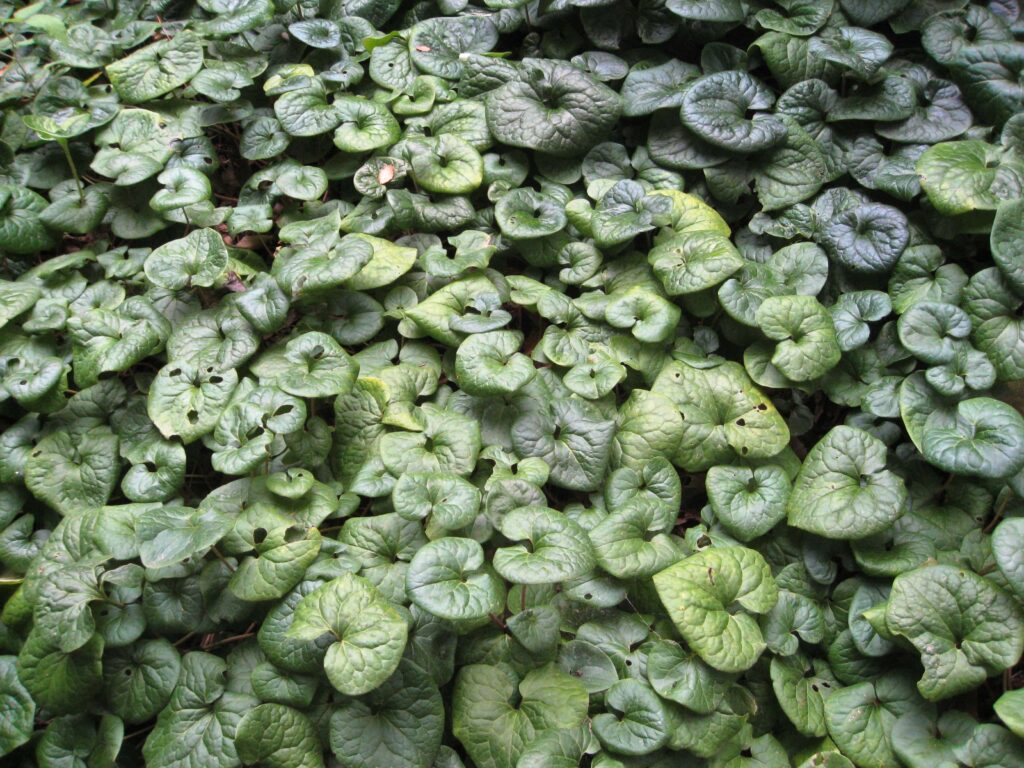
Wild ginger comes in a lot of varieties. In general, they are most useful for covering ground in deep shade. Wild ginger of all types tends to grow lush in the deepest of shades or light to partial shade.
It’s best to choose a ginger that grows native in your area. You’ll find the other type of wild ginger as you continue to the zone 5, 4, and 3 ground cover lists. The end of this post has a link to the zone 5 post, and the zone 5 post has a link to zone 4, and then 3. So keep scrolling to follow the path and uncover all your choices!
- Height: 8 inches
- Range: Native to Western North America
- Climate: Zones 6-10
- Functions: Edible and potentially medicinal roots used for tea. Used as a ‘scent confuser’ in food forests. Or as an ornamental ground cover for its shapely dense foliage.
- Light requirements: Full or semi-shade.
- Soil preferences: Moist soil.
Ferriseeds offers seeds here.
Sweet Coltsfoot (Petasites frigidus)

This ground cover is suitable for wild/woodland gardens. This will take over a manicured garden if upkeep is a thing in your books. Food forests, and wild, or neglected gardens are the best placements for any coltsfoot.
- Height: 4-20 inches
- Range: Native to North America & Europe
- Climate: Zones 6-10
- Functions: Used as a ground cover in food forests for potential medicinal and edible uses.
- Light requirements: Full, semi, or no shade
- Soil preferences: Moist or wet areas with light to heavy soil.
Seeds for this or other varieties may be available here.
Semi-shade zone 6 ground covers:
Semi-shade, otherwise known as partial shade, means direct sunlight occurs each day, but is limited.
Creeping Saxifrage (Saxifraga stolonifera)
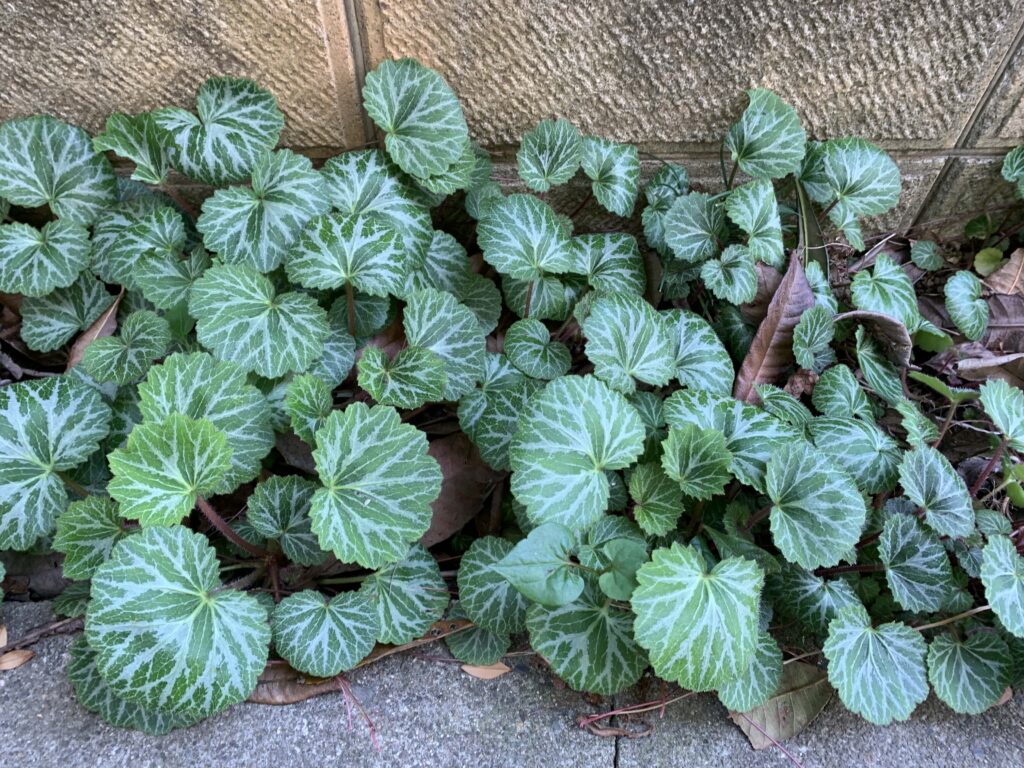
This edible ground cover is sometimes used in shady rock gardens for its interesting foliage and dense spread.
- Height: 6 inches
- Range: Native to Asia
- Climate: Zones 6-10
- Functions: A popular edible ground cover in woodland gardens, borders, or rocky areas. Dense ornamental foliage.
- Light requirements: Partial shade
- Soil preferences: Moist and light to heavy soils.
Many varieties are available for your choosing here, just ensure it is hardy to your zone and grows in partial shade.
Gourmet Mushrooms
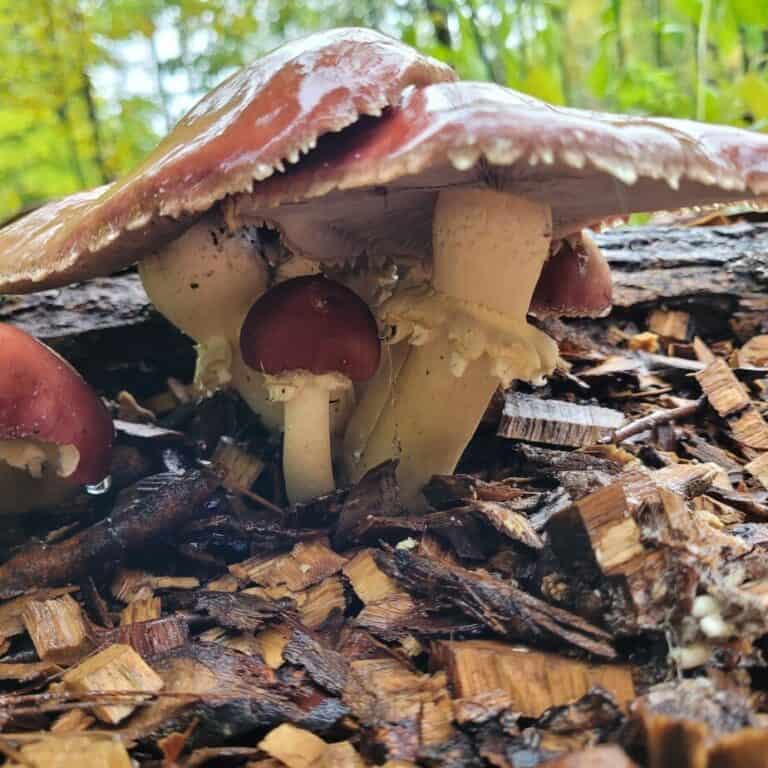
If you’re trying to fill shady spots with functional plants mushrooms also thrive in shade and partial shade!
Fresh mushrooms grown from woodchips are deliciously edible and wood chips offer gorgeous ground coverage while you wait for dinner to spontaneously pop out of the ground.
See: Grow a Mushroom Garden at Home in 4 Steps
Semi or no shade zone 6 ground covers:
These plants are best grown in partial shade receiving at least 2-4 hours of sunlight or more per day as they can also be grown in the sun.
these partial-shade-loving ground covers are wonderful options for cohesively filling both shady spaces and sunny spaces, should you have both areas to work with.
Mountain Iris (Iris douglasiana)
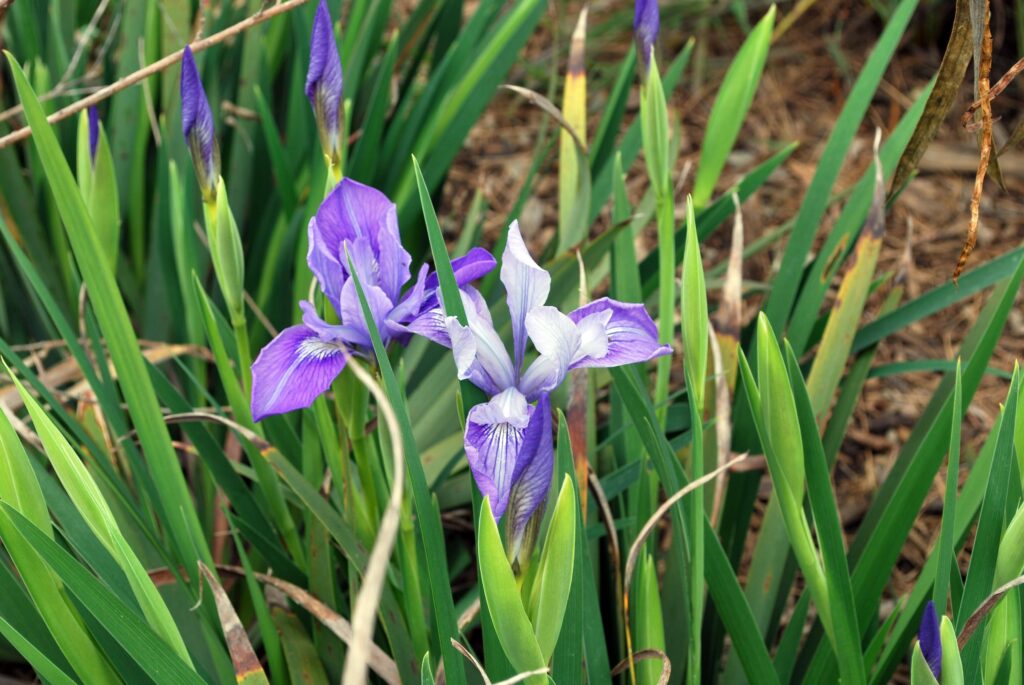
Irises are gorgeous native ground covers for wet and dry areas. Typically they are grown near bodies of water, either fresh or maritime. They are perfect for areas that are dry sometimes but have standing water during certain periods of the year. A perfect match for that type of spot.
- Height: 18 inches
- Range: Native to North America
- Climate: Zones 6-9
- Functions: Often used as an ornamental addition to neglectable gardens with flowers from May to June.
- Light requirements: Partial or no shade.
- Soil preferences: Moist or dry soil and wet or boggy areas. Even tolerates drought.
Mountain iris is offered by seed here.
Shore Juniper (Juniperus conferta)
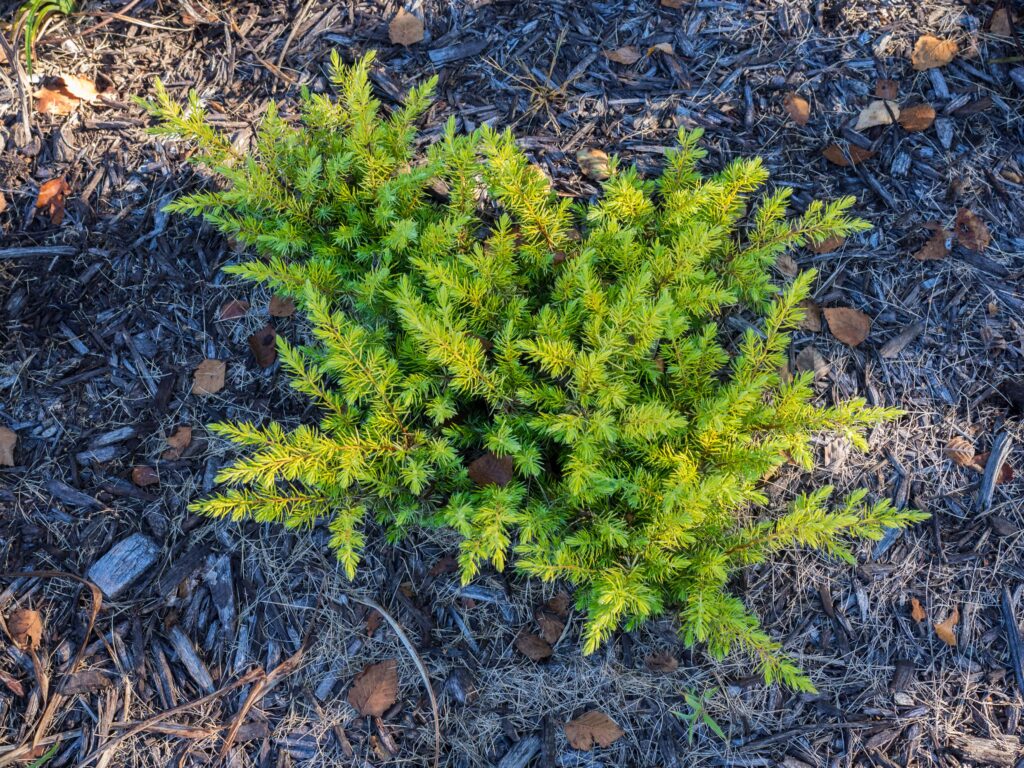
Most junipers need full sun but shore juniper is tolerant to partial shade. Junipers are a preferred ground cover for an evergreen and deer or rabbit resilient landscape.
- Height: 10-18 inches
- Range: Native to Asia
- Climate: Zones 6-10
- Functions: Evergreen ground coverage. Edible fruit (on true junipers) is used to make cocktail bitters! Erosion control on slopes.
- Light requirements: Partial or no shade.
- Soil preferences: Moist or dry soil with drainage. Tolerates drought. Suitable for seashores, and shallow or rocky soils.
Also known as ‘pacific blue’ this juniper is available here in containers.
Related: 23 Evergreen Ground Covers for Shade
Pine phlox (Phlox nivalis)
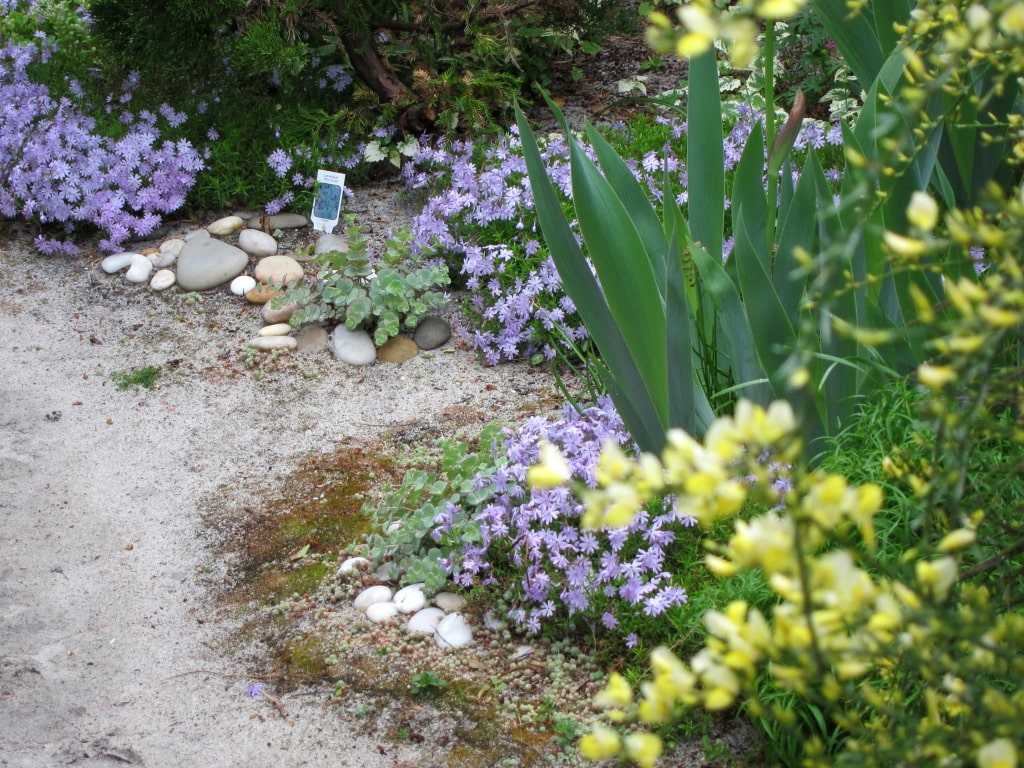
This trailing phlox is a popular ornamental ground cover choice in a lot of zones. This specific trialing phlox is only hardy to zone 6. Other options, however, are also available to you and are hardy to colder temperatures.
This trailing phlox is particularly low-growing and crack-filling, compared to other clumping types.
- Height: 6 inches
- Range: Native to North America
- Climate: Zones 6-9
- Functions: A popular flowering ground cover in food forests and general gardens.
- Light requirements: Partial or no shade
- Soil preferences: Moist or dry light sandy soils are best for their fibrous and fine root systems.
Phlox is very easy to source in containers or as seeds. Nature Hills offers just a large of selection and coloring as Etsy sellers.
Pennyroyal (Mentha pulegium)

This mint thrives in semi-shade and requires moist soil to remain lush. If your shady space is consistently moist then pennyroyal mint is a perfect ground cover candidate.
This great-smelling plant will be visited frequently by butterflies and friendly bees.
- Height: 6-12 inches
- Range: Native to Europe
- Climate: Zones 6-9
- Functions: Attracting pollinators. Scent confusion for a resilient pest-balanced garden. Edible and medicinal concoctions. Fragrances.
- Light requirements: Partial or no shade
- Soil preferences: Moist soil.
Seeds are available here.
Alpine Wintergreen (Gaultheria humifusa)

Wintergreen. A delicious and refreshing scent and flavor. Plus it looks like a very low-growing holly plant with red berries that persist through the winter!
- Height: 4-6 inches
- Range: Native to Western North America
- Climate: Zones 6-9
- Functions: Edible and fragrant ground cover for food forests and rock gardens.
- Light requirements: Partial shade.
- Soil preferences: Moist soils.
Seeds are available to order here at Far Reaches Farm.
Horned Violet (Viola cornuta)

Violets are popular ornamental ground covers, but this horned violet (among others) is accessible to those in zone 6! If you aren’t in Europe, however, other native options may be just as or more appropriate to add to your polyculture of plants.
- Height: 6-8 inches
- Range: Native to Europe
- Climate: Zones 6-11
- Functions: Edible, fast-growing, and beautiful ground coverage. Cut flower arrangements.
- Light requirements: Partial shade.
- Soil preferences: Moist soil.
Nature Hills Nursery offers this violet variety here. Seeds can be found here.
Related: 10 Best Flowering Ground Covers for Full Shade
Pipsissewa (Chimaphila maculata)

Pipsessewa grows better with protection from the sun and scorching heat, so a partial shade position is ideal. Scented white flowers bloom from around June to August.
If you’re looking to fill a more wild, woodland, or native-grown space then pipsissewa can work. This ground cover isn’t a good choice for imported or bacteria-dominant soils. Companions for this ground cover include coniferous trees, Oregon grape, and salal.
- Height: 8 inches
- Range: Native to Eastern North America
- Climate: Zones 6-7
- Functions: Scent confusion ground cover in food forests or woodland gardens.
- Light requirements: Partial shade or no shade
- Soil preferences: Moist soils from light to heavy.
This Canadian seller offers seeds with inoculated soil. This USA seller offers a large quantity of seeds.
Squaw Carpet (Ceanothus prostratus)
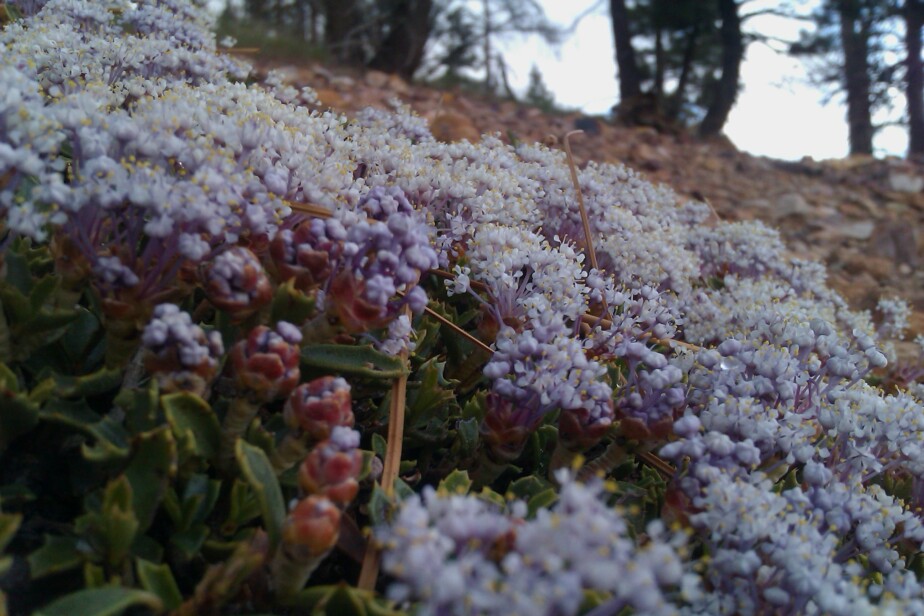
Squaw Carpet loves warmth but tolerates partial shade. Pollinators love their flowers from April to May flowers and this ground cover offers nitrogen-fixing to your landscape.
- Height: 6 inches
- Range: Native to Western North America
- Climate: Zones 6-9
- Functions: Nitrogen fixer. Pollinator
- Light requirements: Partial or no shade
- Soil preferences: Moist or dry soils.
Seeds are available here. Once you plant and establish this ground cover, its best to leave it be without disturbance.
Related: 16 Low-Growing Ground Covers for Shade
Broadleaf Stonecrop (Sedum spathulifolium)

Sedums are popular sun-loving ground covers, however, in zone 6, many sedums do just as well in partial shade.
- Height: 3-8 inches
- Range: Native to Western North America
- Climate: Zones 6-10
- Functions: Rock garden or maritime area ground cover. Ornamental and rabbit/deer resistant.
- Light requirements: Semi or no shade
- Soil preferences: Moist or dry soil and will live through drought periods.
You’ll find loads of sedums here, just be sure to select ones that tolerate partial shade (‘click’ the partial shade search filter box on the left-hand sidebar to narrow the options).
Most of these sedums grow in partial shade as mentioned in their descriptions.
Up Next: Best Zone 4 Ground Covers for Shade (with Pics)
Recent Posts
There’s no shortage of full-sun ground covers for zone 4 climates! Each plant in this list can withstand the frigid temperatures and also enjoy the hot sun in summer. Full sun means that a plant...
There's no shortage of full sun ground covers, not even in zone 3! Zone 3 climates offer hot but short-lived summers and very cold winters. So each plant in this list can withstand the frigid...
